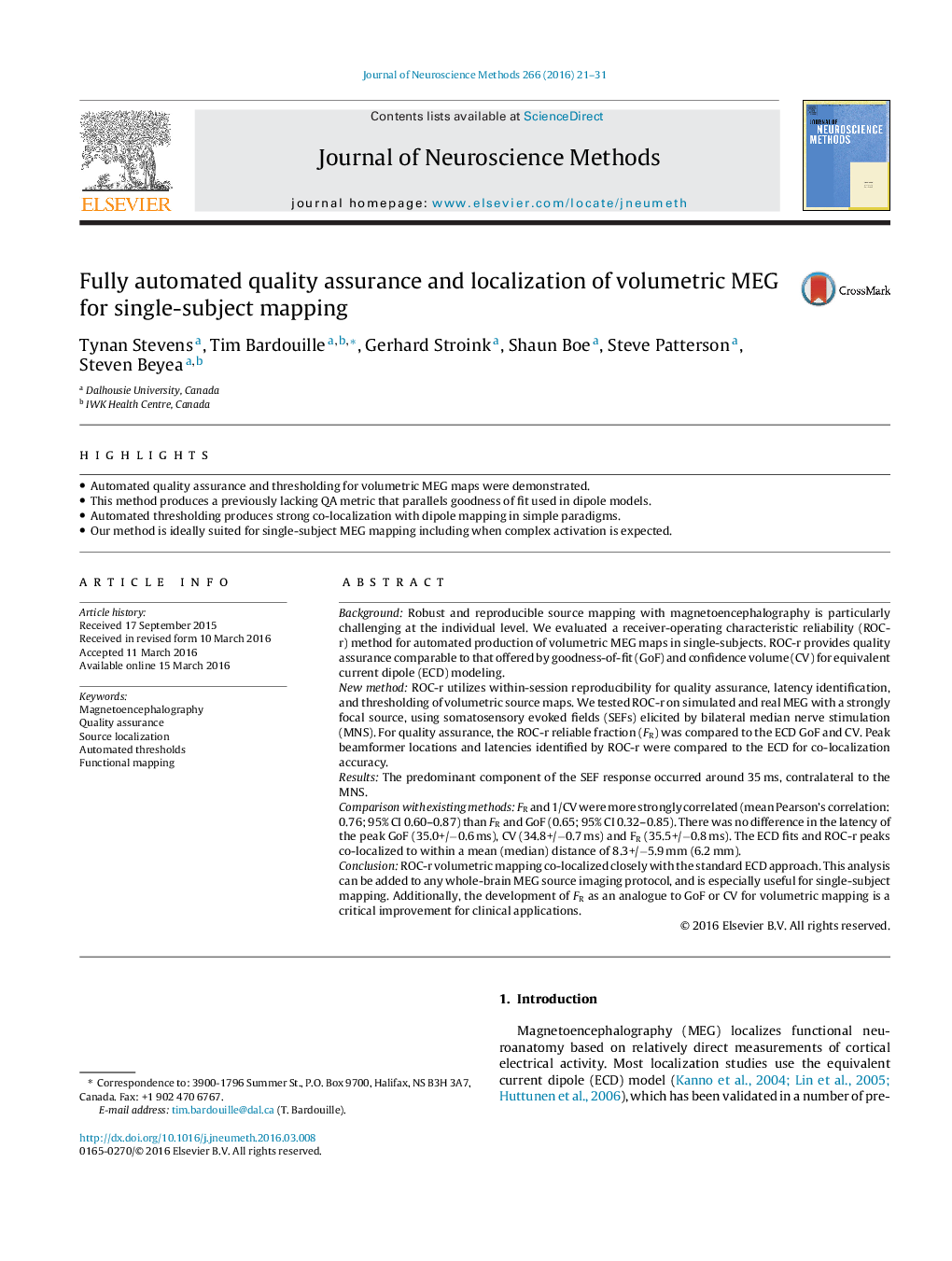| Article ID | Journal | Published Year | Pages | File Type |
|---|---|---|---|---|
| 6267712 | Journal of Neuroscience Methods | 2016 | 11 Pages |
â¢Automated quality assurance and thresholding for volumetric MEG maps were demonstrated.â¢This method produces a previously lacking QA metric that parallels goodness of fit used in dipole models.â¢Automated thresholding produces strong co-localization with dipole mapping in simple paradigms.â¢Our method is ideally suited for single-subject MEG mapping including when complex activation is expected.
BackgroundRobust and reproducible source mapping with magnetoencephalography is particularly challenging at the individual level. We evaluated a receiver-operating characteristic reliability (ROC-r) method for automated production of volumetric MEG maps in single-subjects. ROC-r provides quality assurance comparable to that offered by goodness-of-fit (GoF) and confidence volume (CV) for equivalent current dipole (ECD) modeling.New methodROC-r utilizes within-session reproducibility for quality assurance, latency identification, and thresholding of volumetric source maps. We tested ROC-r on simulated and real MEG with a strongly focal source, using somatosensory evoked fields (SEFs) elicited by bilateral median nerve stimulation (MNS). For quality assurance, the ROC-r reliable fraction (FR) was compared to the ECD GoF and CV. Peak beamformer locations and latencies identified by ROC-r were compared to the ECD for co-localization accuracy.ResultsThe predominant component of the SEF response occurred around 35Â ms, contralateral to the MNS.Comparison with existing methodsFR and 1/CV were more strongly correlated (mean Pearson's correlation: 0.76; 95% CI 0.60-0.87) than FR and GoF (0.65; 95% CI 0.32-0.85). There was no difference in the latency of the peak GoF (35.0+/â0.6Â ms), CV (34.8+/â0.7Â ms) and FR (35.5+/â0.8Â ms). The ECD fits and ROC-r peaks co-localized to within a mean (median) distance of 8.3+/â5.9Â mm (6.2Â mm).ConclusionROC-r volumetric mapping co-localized closely with the standard ECD approach. This analysis can be added to any whole-brain MEG source imaging protocol, and is especially useful for single-subject mapping. Additionally, the development of FR as an analogue to GoF or CV for volumetric mapping is a critical improvement for clinical applications.
